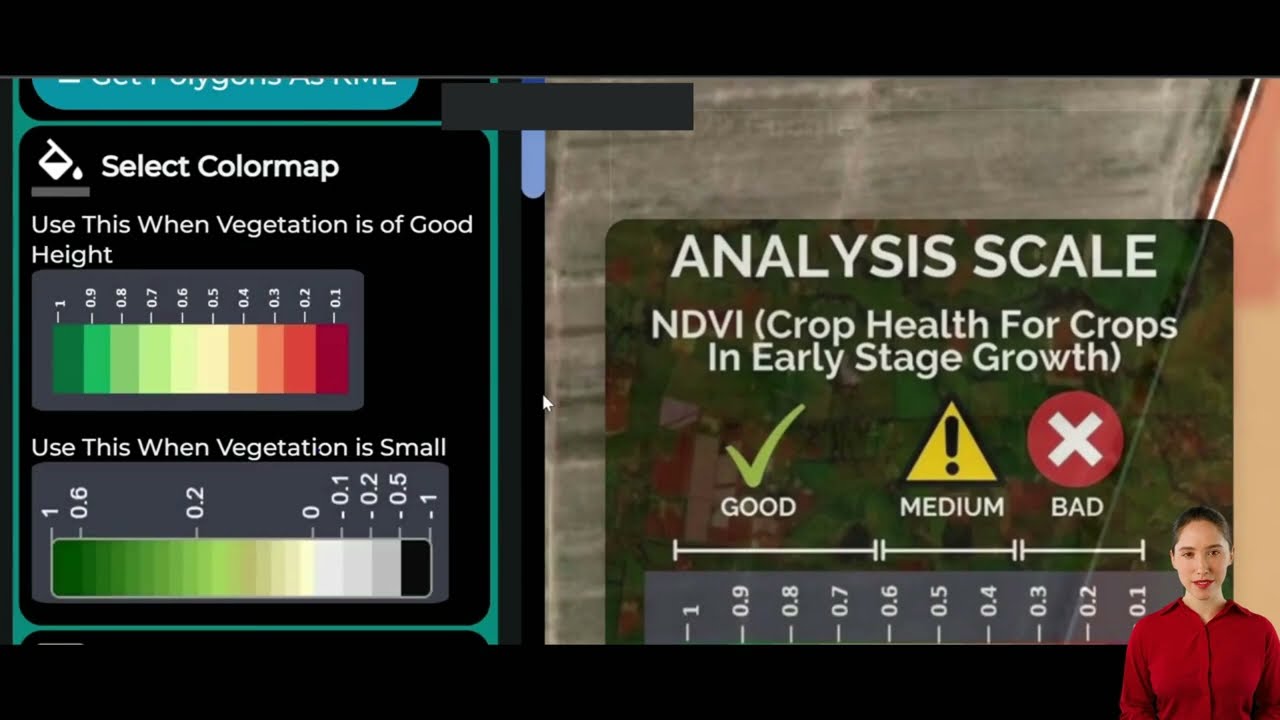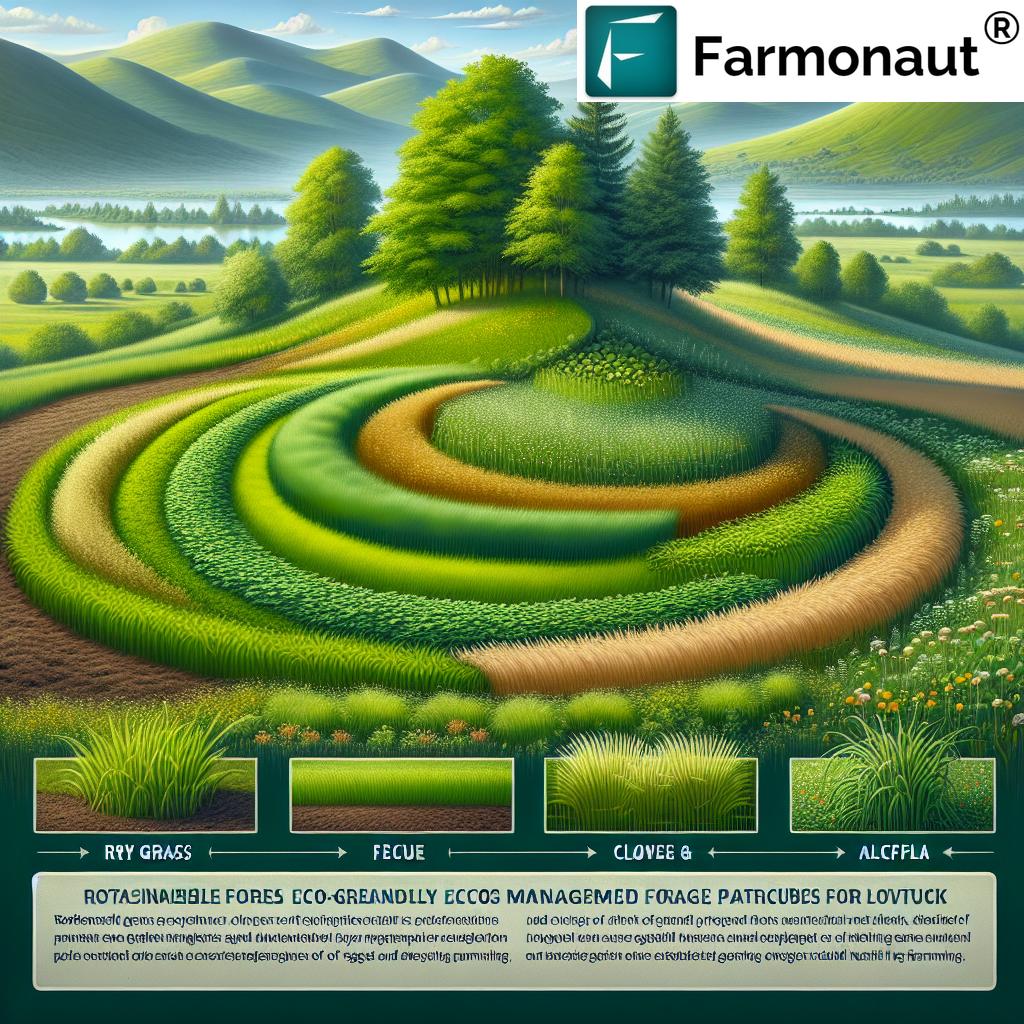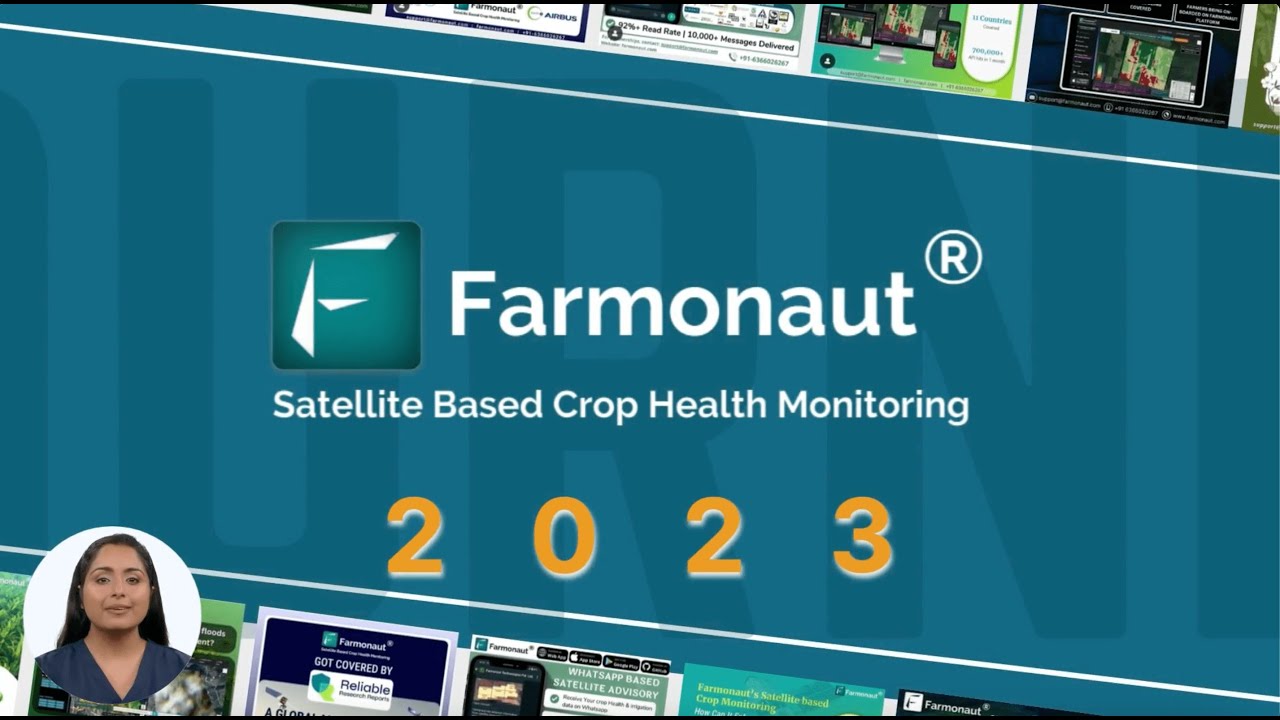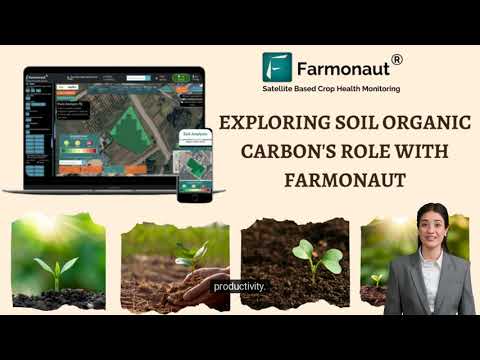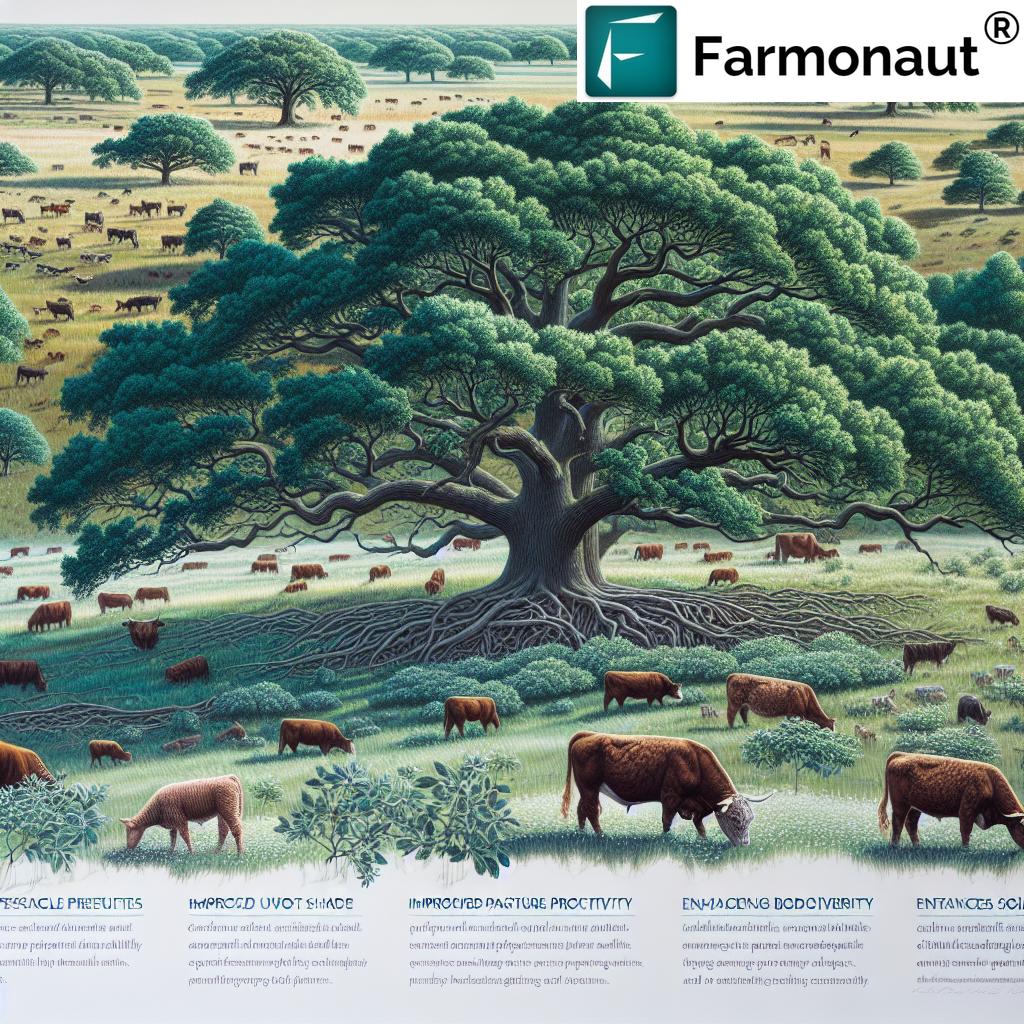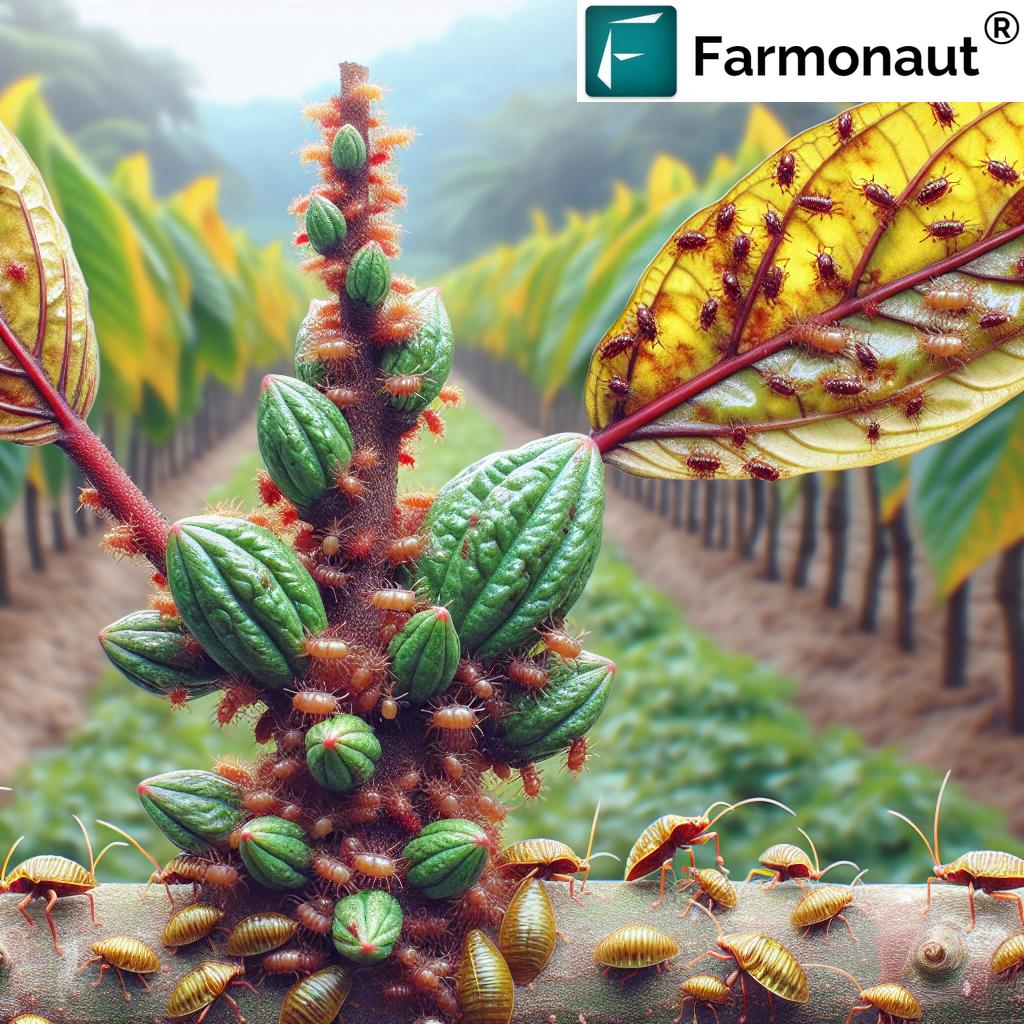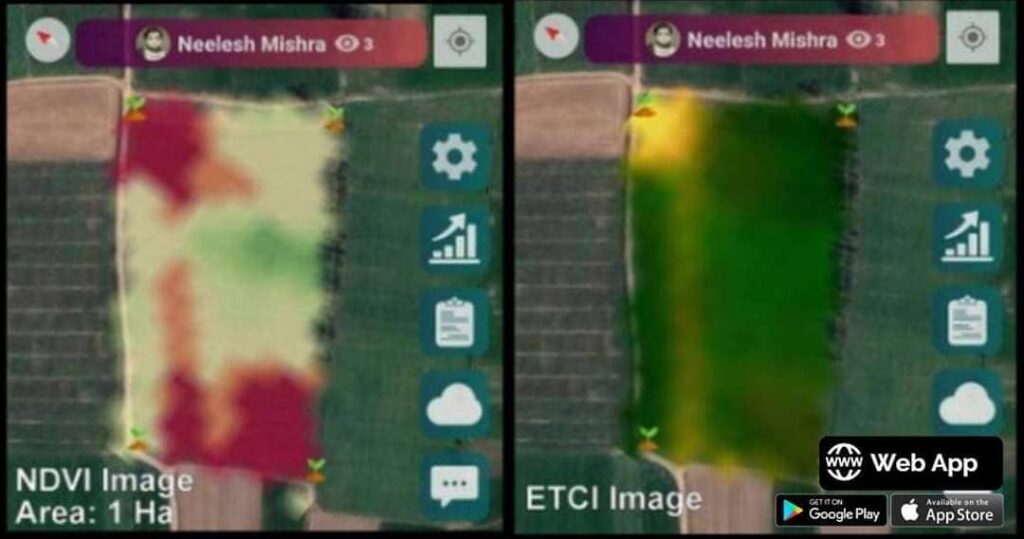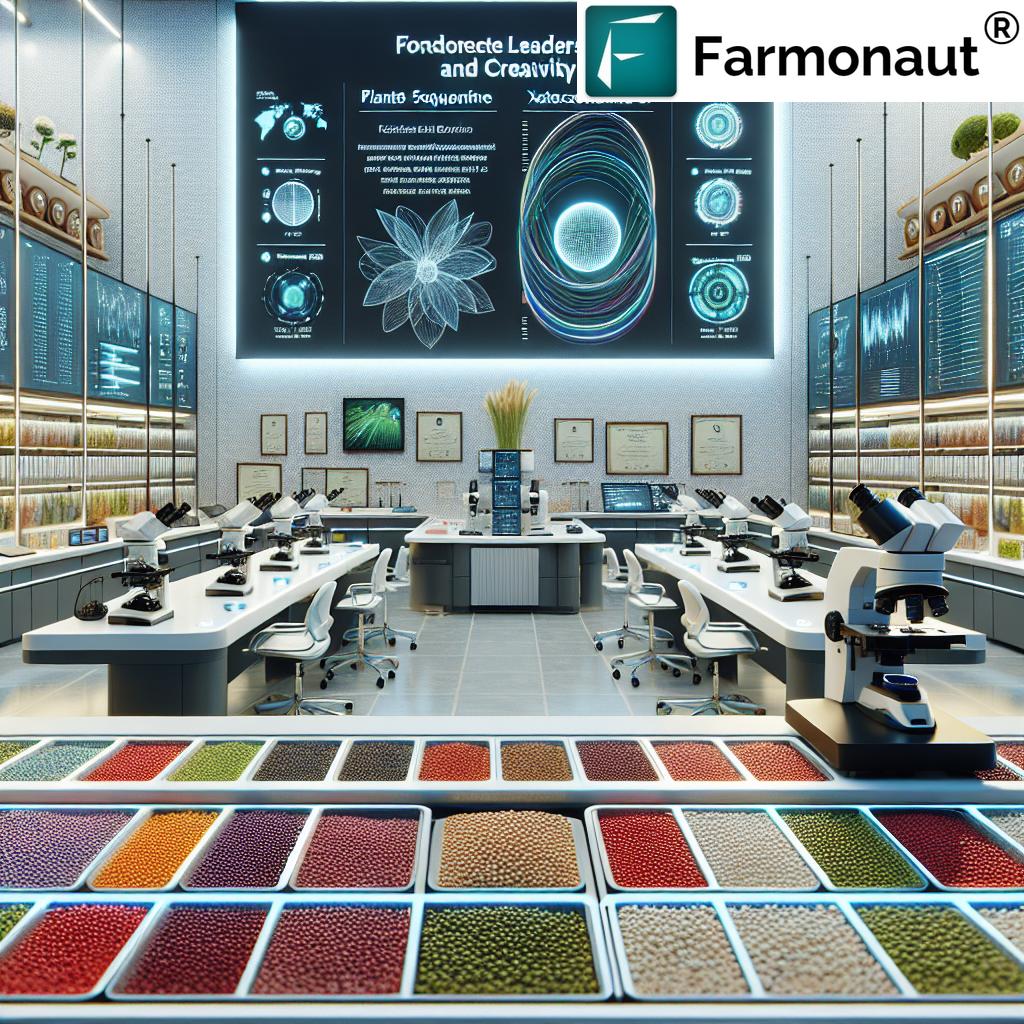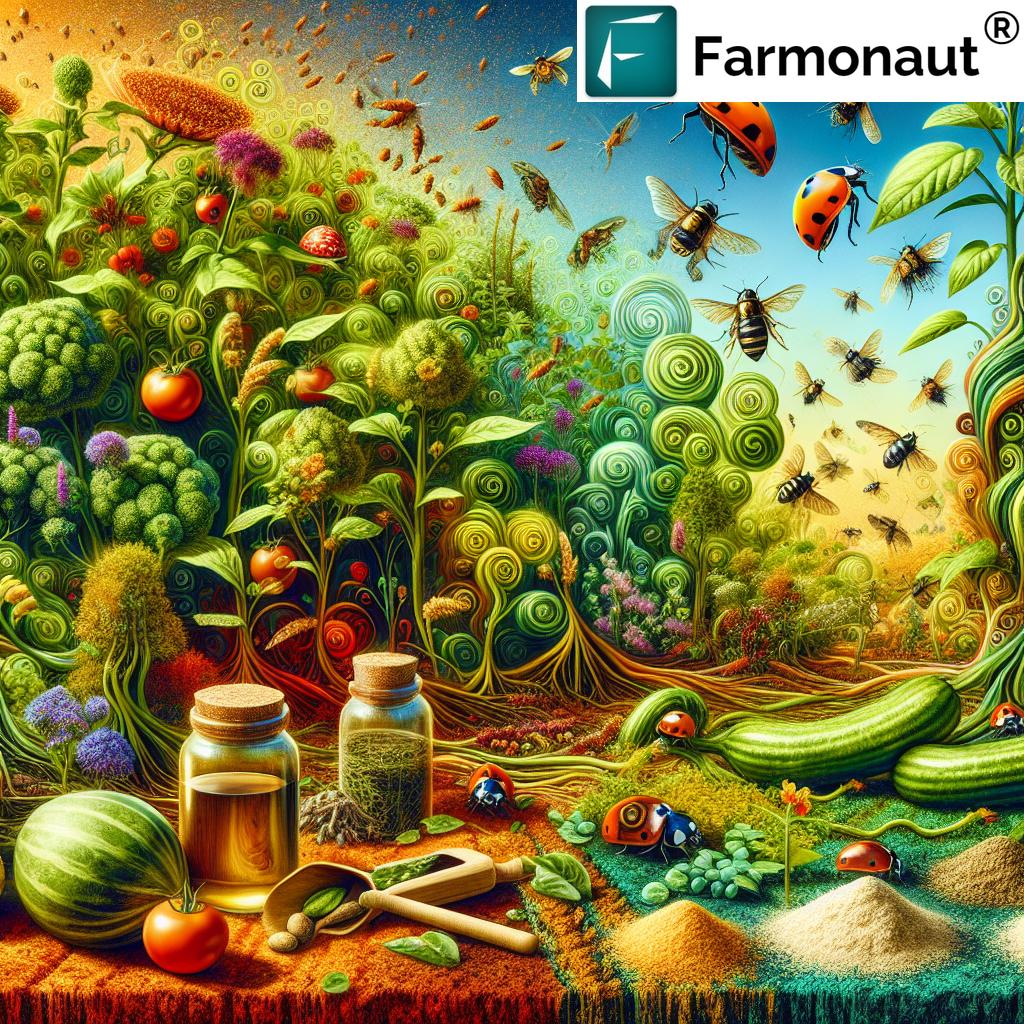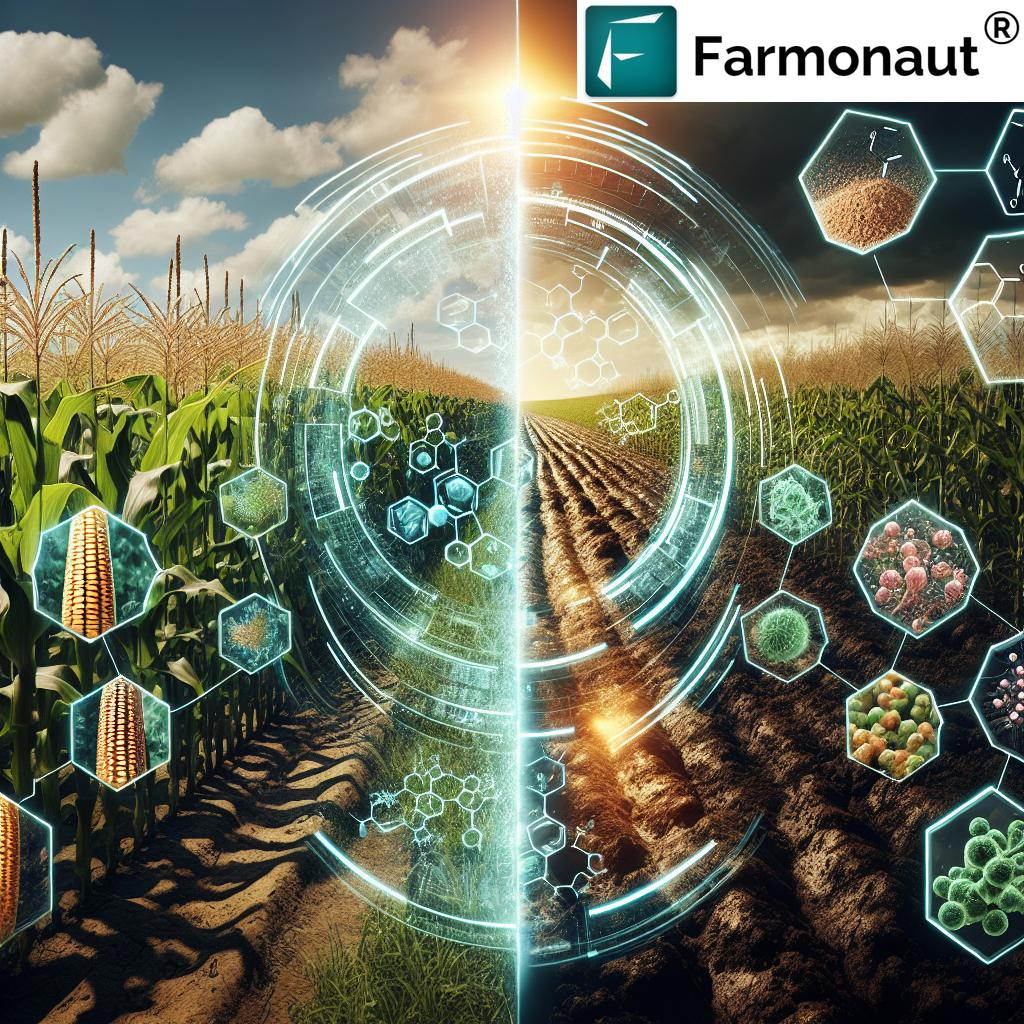Forage Secrets: 7 Practices Farmers Swear By!
“Rotational grazing can increase pasture productivity by up to 30% compared to continuous grazing methods.”
Table of Contents
- Introduction: Why Forage Matters
- Types of Forage: Diversity in Pastures
- The Role of Forages in Agriculture & Farming
- Forage Secrets: 7 Sustainable Forage Management Practices
- Comparison Table: Sustainable vs. Conventional Forage Practices
- Forage in Forestry & Agroforestry Systems
- Economic & Sustainability Aspects of Forage Production
- Farmonaut: Elevating Forage Management through Technology
- FAQ: Forage Management Practices
- Conclusion & Key Takeaways
Introduction: Why Forage Matters
Forage is the green engine that powers sustainable agriculture, farming, and forestry worldwide. At its core, forage refers to plant material—primarily grasses and legumes—that is consumed by livestock and wildlife. Yet its influence runs much deeper than animal nutrition alone: thoughtfully managed forages nurture soil health, boost ecosystem benefits, and underpin eco-friendly farming practices.
In this guide, we explore 7 proven forage secrets—the sustainable forage management practices trusted by innovative farmers worldwide. As we move through these insights, we’ll discover how diverse forage systems not only feed our animals, but also promote land sustainability, conserve vital resources, and ensure the future of responsible agriculture.
Types of Forage: Diversity in Pastures
There is no one-size-fits-all approach when it comes to forages. Efficient management begins with understanding their unique types:
- Grasses: The mainstay of many pastures, these include ryegrass, fescue, and timothy. Each species offers distinct nutritional benefits and can be managed for growth throughout the year.
- Legumes: Examples include clover, alfalfa, and vetch. Legumes are prized for their ability to fix nitrogen, naturally enhancing soil fertility while supporting animal nutrition.
- Browse: Includes woody shrubs and trees (like acacia or willow) often grazed by animals such as goats and deer. Browse supplies unique nutritional benefits and diversifies the ecosystem within pastures.
These forages are broadly categorized and each one contributes differently to the ecosystem. By strategically combining grasses, legumes, and a touch of browse, we can cultivate sustainable forage systems that boost soil health in agriculture, promote biodiversity, and keep livestock well-nourished all year long.
The Role of Forages in Agriculture & Farming
Forages: The Foundation of Sustainable Animal Nutrition & Soil Fertility
It’s nearly impossible to overstate the importance of forages in agricultural systems. From primary crops to managed pastures, forage plants serve several key functions:
- Support Livestock Nutrition: Forage provides essential nutrients and roughage for healthy digestive systems, keeping animals robust and productive.
- Enhance Soil Health: Roots of grasses and legumes improve soil structure, boost organic matter, and nurture a living ecosystem beneath the field.
- Promote Sustainability: Efficient forage management practices reduce reliance on external feed and fertilizers, maintain ecological balance, and increase farm profitability.
- Prevent Erosion: Well-maintained pastures and cover crops shield soil from water and wind erosion, preserving long-term sustainability.
Forage Secrets: 7 Sustainable Forage Management Practices
Boosting Soil Health, Productivity, and Nutrition—Naturally!
We believe that forage management practices must focus on long-term sustainability, ecological balance, and productivity. Let’s dive into seven practices that deliver outstanding results for pastures, soil health in agriculture, and livestock nutrition.
“Cover cropping reduces soil erosion by nearly 50%, enhancing sustainability in forage-based farming systems.”
-
1. Rotational Grazing—The Cornerstone of Grazing Management Techniques
With rotational grazing, we divide pastures into managed paddocks and move livestock frequently. This prevents overgrazing, promotes regrowth, and maximizes forage productivity. Rotational grazing benefits include:
- 30% higher pasture yield vs. continuous methods
- Reduced soil compaction; improved soil health
- Healthier livestock, thanks to consistent nutritional benefits of forages
Tip: Combining this method with regular carbon footprint monitoring (like with Farmonaut’s tools) can further demonstrate environmental gains.
-
2. Forage Crop Rotation—Enriching Soil and Reducing Pest Infestations
Alternating forage species across seasons increases soil nutrient content, disrupts pest cycles, and enhances fertility. By including cool-season grasses (e.g., ryegrass), warm-season legumes (e.g., clover), and browse, we:
- Boost biodiversity and ecosystem resilience
- Reduce the need for chemical fertilizers and pesticides
- Improve forage and animal nutrition throughout the year
Practice: Plan crop rotations with precision using satellite-based crop health monitoring from Farmonaut to identify field variability and manage rotations for optimal soil structure.
-
3. Integrating Legumes—Natural Nitrogen Fixers for Sustainable Forage Systems
We integrate legumes (like alfalfa, vetch, and clover) with grasses to fix nitrogen in the soil, improve fertility, and reduce reliance on synthetic inputs. This:
- Enriches soil health in agriculture
- Supports soil structure and moisture retention
- Delivers protein-rich animal feed with high nutritional value
-
4. No-Till & Conservation Tillage—Minimizing Soil Disturbance and Erosion
Practicing no-till farming or reduced tillage preserves soil structure, keeps carbon in the ground, and reduces erosion. By maintaining a continuous plant cover, we:
- Protect soil health and enhance microbial life
- Lower runoff and maintain moisture in pastures
- Reduce operational costs for field preparation
Best paired with: Carbon Footprinting analysis (see Farmonaut) to track improvements in field sustainability.
-
5. Strategic Harvesting Techniques—Ensuring Consistent Supply and Nutritional Value
Harvests should be timed for maximum nutritional benefits of forages. Key methods:
- Harvesting at early bloom for legumes; boot stage for grasses
- Employing hay making and silage production to store forage for tough seasons
- Frequent mowing to promote new, tender regrowth
Technological edge: Use AI-based advisory systems (Farmonaut Jeevn AI) to determine optimal harvest windows based on real-time satellite data and weather.
-
6. Integrated Pest Management (IPM) for Forage Crops
Combining biological, cultural, and mechanical control methods prevents pest infestations and minimizes chemical use. Effective IPM:
- Promotes beneficial insect habitats in forage systems
- Ensures healthier crops and animals
- Enhances farm environmental sustainability
Resource: Monitor and analyze pest activity using Farmonaut’s API-based crop monitoring for data-driven pest management decisions.
-
7. Efficient Water & Resource Management in Forage Systems
Water conservation techniques are vital for long-term forage availability. These include:
- Implementing efficient irrigation systems—like drip or rotational sprinklers
- Selecting drought-resistant forage species
- Using soil moisture sensors or real-time soil monitoring applications (Farmonaut)
These approaches help maintain productivity in changing climates and reduce resource costs.
Comparison Table: Sustainable Forage Management Practices vs. Conventional Practices
Every decision we make about forage management practices impacts soil health, pasture productivity, livestock nutrition, and the environment. Here is a clear side-by-side look at sustainable vs. conventional methods, including real benefits and estimated improvements:
| Practice Name | Method Description | Estimated Increase in Pasture Yield (%) | Estimated Improvement in Soil Health (1-10) | Impact on Livestock Nutrition | Eco-Friendliness Score (1-10) |
|---|---|---|---|---|---|
| Rotational Grazing | Moving livestock between paddocks to rest pastures and prevent overgrazing | Up to 30% | 8 | High | 9 |
| Continuous Grazing (Conventional) | Livestock graze same area continuously; limited rest for grasses | 0-5% | 4 | Medium | 4 |
| Crop Rotation (Forage-Focused) | Altering forage species; integrating legumes and cover crops | 15-22% | 9 | High | 9 |
| Monoculture Forage (Conventional) | Single species planted year after year | 0-6% | 3 | Low-Medium | 3 |
| No-Till/Conservation Tillage | Soil left undisturbed; minimal tillage done for seeding only | 10-18% | 9 | Medium-High | 9 |
| Conventional Tillage | Regular plowing and turning of soil | -5-5% | 2 | Medium | 2 |
| Integrated Legumes | Mixing clover, alfalfa, vetch for natural nitrogen-fixation | 12-20% | 9 | High | 9 |
| Legume-Free Pastures (Conventional) | Only grasses grown; synthetic fertilizers used | 3-5% | 4 | Medium | 3 |
| Strategic Harvesting (Sustainable) | Timely harvests, hay making, and silage for nutritional optimization | 11-17% | 8 | High | 8 |
| Untimed Cutting/Overharvesting (Conventional) | Random or excessive harvesting; minimal thought to forage regrowth | -3-5% | 2 | Low-Medium | 2 |
| IPM (Integrated Pest Management) | Biological/cultural/mechanical controls integrated | 10-13% | 8 | Medium-High | 9 |
| Conventional Pest Control | Synthetic pesticides, little prevention planning | 0-5% | 3 | Low | 3 |
| Efficient Water Management | Optimized irrigation and drought-resistant forages | 9-14% | 8 | Medium-High | 8 |
| Conventional Water Use | Flood irrigation/little adaptation to moisture stress | 4-6% | 3 | Low | 3 |
Forage in Forestry & Agroforestry Systems
The Power of Integrated Silvopasture Systems
Forages don’t just belong in fields and pastures. In forestry, forages are essential for maintaining wildlife habitats and promoting land conservation. Integrated silvopasture systems—combinations of trees, grasses, and livestock—provide a mutually beneficial system that:
- Enhances biodiversity and wildlife support
- Improves pasture productivity through microclimate regulation
- Offers additional farm resources: timber, fruits, and nuts
- Reduces erosion by keeping plant material on the land year-round
We recommend exploring agroforestry and forage systems that integrate rows or clusters of trees (like poplar, pine, or acacia) with managed forage crops for livestock. The result? Enhanced environmental sustainability and increased resilience to seasonal dry spells or market changes.
Curious to manage your mixed-use fields better? Use Farmonaut’s satellite analysis tools to map tree and forage growth over time, recognize stress areas, and monitor soil health across diverse land parcels.
Economic & Sustainability Aspects of Forage Production
Maximizing Value: Balancing Profitability, Resource Conservation & Animal Nutrition
Building resilient forage systems is an investment—one that may come with up-front costs for land preparation, seed selection, planting, and ongoing management. However, sustainable forage management practices will:
- Lower long-term feed costs by increasing in-field production
- Improve animal health (reducing veterinary expenses)
- Contribute to farm profitability through consistent, reliable nutritional supply
- Reduce environmental fees or penalties through carbon footprint tracking
- Boost market value if using blockchain-based product traceability to prove product quality and origin
Additionally, if access to crop loans or insurance matters, verified satellite-based crop validation from Farmonaut can facilitate legitimate, hassle-free financial support for forage-based operations.
In short, adopting these sustainable practices ensures long-term productivity, better soil and animal nutrition, and a positive impact on our shared environment.
Farmonaut: Elevating Forage Management through Technology
Precision Solutions for Smarter, Greener Forage Systems
Modern sustainable forage systems call for the very best in technology, insights, and data. That’s why an advanced platform like Farmonaut is so valuable for farmers, cooperatives, agribusinesses, and government agencies building their futures on forage management.
- Satellite Crop Health Monitoring:
- View real-time vegetation indices (like NDVI), moisture, and more for large or small fields—optimizing forage regrowth, rotation, and harvests.
- AI-Based Advisory (Jeevn AI):
- Receive tailored advice on plant nutrition, disease, and optimal forage management practices for specific locations, using AI analysis of satellite data, field information, and local weather.
-
Blockchain Traceability Solutions:
- Build transparency and consumer trust by tracing livestock and forage product origins—vital for premium/sustainable market positioning.
-
Resource & Fleet Management:
- Maximize the efficiency of forage harvesting and delivery with dedicated fleet/resource management tools.
-
Carbon Footprinting & Sustainability Metrics:
- Track, manage, and reduce environmental impact with real-time, field-based emissions analysis—perfect for meeting future regulations and eco-certification needs. Learn more about carbon tracking.
-
API for Custom Agritech Projects:
- Integrate Farmonaut’s satellite/weather API directly into agricultural research, feed analysis, or custom app development.
Farmonaut’s solutions are accessible and affordable, so whether we run a small family pasture or manage thousands of hectares, we can implement the same high-tech sustainable forage practices that are transforming global agriculture.
FAQ: Forage Management Practices
What are the best forage crops for livestock in sustainable systems?
Grasses like ryegrass, fescue, and timothy are excellent, but integrating legumes (e.g., clover, alfalfa, vetch) provides higher quality protein and natural nitrogen. Browse and woody species are beneficial for goats and wildlife.
How do forage management practices enhance soil health in agriculture?
Practices like crop rotation, integrating legumes, conservation tillage, and rotational grazing boost organic matter, reduce erosion, improve soil microbial life, and balance field nutrients for maximum productivity.
Are sustainable forage systems more expensive?
There may be higher initial costs for seed selection, paddock fencing, or technology adoption, but over time, these practices lower feed and input costs, improve animal health, and enhance overall farm profitability and sustainability.
How can I get started with satellite-based forage management?
Download the Farmonaut App for Android/iOS or use the web dashboard. This powerful platform lets you monitor forage crop health, soil moisture, and plan harvests or rotations with data-driven confidence.
What is the eco-friendliest forage management practice?
Combining several sustainable practices—rotational grazing, IPM, integrated legumes, crop rotation, and conservation tillage—maximizes eco-friendliness. No single method stands alone; a holistic strategy is most effective.
Conclusion & Key Takeaways
Sustainable forage management practices are the cornerstone of modern agriculture, farming, and forestry. By adopting a carefully balanced mix of rotational grazing, crop rotation, integrated legumes, no-till methods, strategic harvesting, IPM, and efficient water use, we ensure:
- Stronger soil health and resilient ecosystems
- Increased pasture productivity and reliable forage supply
- Optimal livestock nutrition—the key to farm profitability and food security
- Positive, measurable improvements in environmental sustainability
By leveraging technology from platforms like Farmonaut, we can track progress, cut waste, reduce costs, and build transparent, future-proof forage systems for generations to come.
Let’s commit to nurturing our soil, sustaining our land, and feeding our animals the right way—the sustainable way.
Ready to take the next step towards sustainable forage management? Experience the ease and impact of advanced satellite, AI, and blockchain technology tailored for farmers and agribusinesses—try Farmonaut for your fields today.





